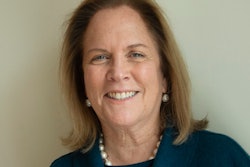Mathematics, often regarded as a daunting subject, can significantly influence a student’s academic trajectory and career options. If one does not believe that they will be successful in a math class, then they can be defeated before they even begin. Regardless of an instructor's talent or the allure of a dynamic curriculum, success hinges not solely on external factors, but also on the learner's mindset.
Students’ self-perceptions are central to the actions, or inactions, they pursue within social systems such as in mathematics classrooms. When students perceive themselves as competent or capable in math, they are more likely to engage with challenging material and persist through difficulties. Conversely, those who view themselves as poor mathematicians may shy away from challenges, resulting in lower achievement levels.
 Dr. Marcus Bright
Dr. Marcus Bright
The pivotal junction where math classes transition through Algebra I, Algebra II, Calculus, and beyond marks a point where students knowingly or unknowingly make the decision on whether they will have the option of majoring in a STEM field after their matriculation to a college or university due to the high-level math courses that are required.
I wrote about my “Bridges to a Brighter Future” framework in my book Brighter Levels to a Brighter Future: Going Higher in Our Purpose and Building Infrastructures of Opportunity for the Next Generation. It can be applied to creating the internal conditions for the acceleration of achievement in mathematics for students.
The belief bridge is the first bridge that a student who desires a brighter future in math must cross according to the framework. This entails crossing the belief threshold to the point where one’s belief that they can successfully learn the math concepts outweighs the temptation to mentally “check out” of the class or give up altogether.
This belief threshold involves convincing oneself that they can master the math concepts presented in class, thus outweighing any inclination to disengage or surrender. This transition is far from trivial. The stigma attached to advanced mathematics, along with its perceived complexity, creates a mental barrier that many students face. Those who successfully cross this bridge do so by consistently affirming their capability to learn and excel, transforming thoughts of inadequacy into a robust sense of possibility.
















